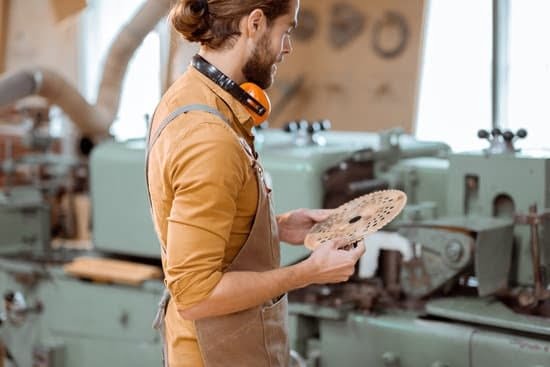What can you do with a vacuum pump woodworking? Vacuum pumps play a crucial role in woodworking processes, offering a wide range of applications that are essential for various techniques and tasks.
From clamping and veneering to drying and stabilizing, vacuum pumps are indispensable tools in the woodworking industry, providing precision and efficiency in handling wood materials. This article will delve into the different types of vacuum pumps used in woodworking, their specific applications, and how they contribute to enhancing the overall quality of woodwork projects.
In the realm of woodworking, there are several types of vacuum pumps utilized for different purposes. Each type offers unique features and capabilities that cater to specific woodworking applications. Understanding these variations and their functions is crucial for achieving optimal results in woodworking projects. Additionally, exploring the diverse methods and techniques employed with vacuum pumps will provide valuable insights into their role in enhancing woodworking processes.
One of the primary uses of vacuum pumps in woodworking is for vacuum clamping. This technique involves securing wood materials firmly in place during cutting, shaping, or bonding processes.
By creating a strong hold through suction, vacuum clamping ensures precision and stability, allowing woodworkers to work with greater accuracy and control. Moreover, vacuum pumps are also integral for veneering, drying and stabilizing wood, chucking on lathes, bagging laminates, among other functions that significantly impact the quality and efficiency of woodworking projects.
Types of Vacuum Pumps Used in Woodworking
Positive-Displacement Vacuum Pumps
Positive-displacement vacuum pumps are commonly used in woodworking for their ability to create a strong and consistent vacuum. These pumps work by trapping air inside a chamber and then reducing the volume of that chamber to create a vacuum. This type of pump is ideal for applications such as veneering, where a stable and uniform pressure is required to apply veneer to wood surfaces.
Rotary Vane Vacuum Pumps
Rotary vane vacuum pumps are another popular choice in woodworking due to their reliability and efficiency. These pumps utilize rotating vanes to create a vacuum, making them suitable for tasks such as clamping wood during machining processes. Their compact size and quiet operation make them ideal for use in woodworking workshops.
Liquid Ring Vacuum Pumps
Liquid ring vacuum pumps are often used in woodworking applications that require the removal of moisture from wood. These pumps can handle both liquid and solid particles, making them effective for tasks such as drying and stabilizing wood. The ability of liquid ring vacuum pumps to handle wet materials makes them valuable tools in the woodworking industry.
Woodworkers can opt for different types of vacuum pumps based on their specific needs and the nature of the woodworking processes they perform. Understanding the different types of vacuum pumps available and their specific applications is crucial for achieving desired results in woodworking projects.
Vacuum Clamping
Vacuum pumps play a crucial role in the woodworking industry, providing a wide range of applications to aid in various woodworking processes. One of the key uses of vacuum pumps in woodworking is for vacuum clamping.
This method involves using the force of atmospheric pressure to hold wood firmly in place during machining, sanding, carving, and other woodworking processes. The use of vacuum clamping offers several benefits such as ensuring even pressure distribution, reducing the risk of damage to delicate workpieces, and allowing for quick and efficient setup.
There are different types of vacuum clamping systems used in woodworking, each with its own specific applications. Some common types include:
- Vacuum tables: These are flat surfaces with built-in vacuum channels that securely hold workpieces in place during machining or finishing processes.
- Vacuum pods: These are small, individual suction cups mounted on a base or frame which can be positioned and repositioned as needed to hold irregularly shaped workpieces.
- Vacuum jigs: These are custom-designed fixtures that utilize vacuum suction to hold workpieces at specific angles for tasks such as joinery or edge profiling.
Woodworkers can also utilize vacuum clamping for projects such as panel glue-ups, where multiple pieces of wood need to be tightly held together during the gluing process. Additionally, vacuum clamping is commonly used for CNC routing and carving processes to secure workpieces on the machine bed.
Overall, what can you do with a vacuum pump woodworking includes utilizing it for efficient and reliable clamping of wood during various woodworking processes. By understanding the different types of vacuum clamping systems available and their applications, woodworkers can optimize their workflow and achieve greater precision and consistency in their projects.
Vacuum Veneering
The Process of Vacuum Veneering
The process of vacuum veneering begins with preparing the substrate and the veneer. The substrate is typically a larger piece of wood, while the veneer is a thinner slice that will be applied on top. Once both pieces are prepared, they are placed in a vacuum bag with the aid of clamps and sealing tape.
The vacuum pump is then activated, removing air from the bag and creating suction that presses the veneer onto the substrate. This pressure ensures that the two pieces bond together effectively.
Benefits of Using Vacuum Pumps for Veneering
One of the main benefits of using vacuum pumps for veneering processes in woodworking is that it allows for even pressure distribution across large surfaces. This results in a uniform bond between the substrate and the veneer, eliminating any potential warping or bubbling that can occur with other bonding methods. Additionally, vacuum pumps facilitate efficient and precise application of adhesives, ensuring minimal mess and maximum effectiveness during the veneering process.
Applications in Woodworking
Vacuum veneering is commonly used in various woodworking applications such as furniture making, cabinet construction, and decorative woodworking projects. With its ability to create seamless bonds between different surfaces, vacuum pumps play a vital role in achieving professional and high-quality finishes in woodworking projects that involve veneering techniques.
Overall, using vacuum pumps for veneering processes in woodworking offers several advantages such as efficient adhesive application, precise pressure distribution, and seamless bonding. These benefits make vacuum pumps an indispensable tool for achieving professional results in woodworking projects that involve veneering techniques.
Vacuum Drying and Stabilizing
One of the main advantages of using a vacuum pump for drying and stabilizing wood is that it allows for the process to be completed more quickly compared to traditional air-drying methods. The vacuum pump creates a low-pressure environment that accelerates the evaporation of moisture from the wood, speeding up the drying process significantly.
Furthermore, vacuum pumps are also used for stabilizing wood by infusing it with stabilizing resins under vacuum pressure. This process helps to strengthen and solidify porous or soft woods, making them more durable and less prone to warping or movement. By removing air from the wood cells and replacing it with a stabilizing agent under vacuum pressure, the wood becomes more resistant to changes in temperature and humidity, enhancing its overall quality and usability for woodworking projects.
In addition to drying and stabilizing raw lumber, vacuum pumps are also used for stabilizing turned wooden items such as bowls and spindles. By utilizing a vacuum chamber or chamber system along with specialized stabilizing solutions, woodturners can achieve greater strength and stability in their finished products. Overall, the use of vacuum pumps in woodworking for drying and stabilizing wood offers numerous benefits in terms of efficiency, quality, and performance of the final products.
| Advantages | Benefits |
|---|---|
| Quick drying process | Speeds up production timeline |
| Enhanced durability | Makes wood resistant to warping |
| Improved stability | Reduced movement due to changes in temperature/humidity |
Vacuum Chucking
One of the main advantages of using a vacuum pump for chucking in woodworking is the ability to hold both large and small pieces of wood securely without causing any damage or marks on the surface. This is especially beneficial when working with delicate or high-value wood that needs to be turned or shaped without any imperfections.
The vacuum chucking technique also allows for quick and easy repositioning of the wood without the need for readjusting clamps or screws, saving valuable time during the woodworking process.
Woodworkers can use a vacuum pump for chucking to create intricate designs and patterns on their turned wood pieces, as the stability provided by the suction allows for precise cutting and shaping. This method is commonly used by artisans and craftsmen who specialize in ornamental turning or creating finely detailed wooden decorative items. Additionally, vacuum chucking can also be used for holding wood in place for carving, sanding, and other finishing processes, making it a versatile tool in woodworking.
| Advantages | Applications |
|---|---|
| Securely holds both large and small pieces of wood | Intricate designs and patterns on turned wood pieces |
| Allows for quick and easy repositioning of the wood | Holding wood in place for carving, sanding, and finishing processes |
Vacuum Bagging
In woodworking, vacuum pumps are essential for various techniques, including vacuum bagging. This technique involves the use of a vacuum pump to create pressure, which is then used to press layers of wood veneer, fiberglass, or other laminates together and remove any air bubbles. The result is strong, smooth, and high-quality laminated wood products. Here are some specific ways that vacuum pumps are used for laminating and forming wood using vacuum bagging techniques:
- Creating curved wood components: Vacuum bagging can be used to laminate thin strips of wood together to form curved or bent components such as chair backs, guitar sides, and decorative architectural elements.
- Applying veneers: Vacuum bagging is an effective method for applying thin wood veneers to substrates like MDF or plywood. The vacuum pressure ensures that the entire surface is evenly covered with adhesive and allows for a strong bond between the veneer and substrate.
- Making lightweight composite panels: By using vacuum bagging techniques, woodworking enthusiasts can create lightweight yet sturdy composite panels by laminating multiple layers of wood or other materials with adhesives under pressure.
Overall, vacuum bagging techniques enable woodworkers to produce high-quality laminated and formed wood products with excellent strength and visual appeal.
When utilizing a vacuum pump in woodworking for vacuum bagging techniques, it’s important to select a pump that provides sufficient pressure levels for the specific application. Additionally, proper maintenance of the pump is crucial to ensure its longevity and consistent performance. Regularly checking seals, hoses, and valves can prevent air leaks that may affect the effectiveness of the vacuum bagging process. Moreover, following safety guidelines when working with vacuum pumps is essential to protect oneself from potential hazards.
Maintenance and Tips for Using a Vacuum Pump in Woodworking
In conclusion, the use of vacuum pumps in woodworking is essential for a variety of processes, from clamping and veneering to drying and stabilizing wood. The different types of vacuum pumps cater to specific woodworking applications, making them versatile tools in the workshop. Vacuum pump technology has revolutionized the way woodworkers approach their craft, offering efficient and effective solutions for various tasks.
One of the key benefits of using a vacuum pump in woodworking is its ability to provide uniform clamping pressure during glue-ups, ensuring strong and precise bondings. Additionally, vacuum pumps are crucial for veneering processes, allowing woodworkers to achieve smooth and seamless finishes on their projects. Moreover, the use of vacuum pumps for drying and stabilizing wood is an important step in preventing warping and cracking, ultimately resulting in high-quality finished products.
For those considering incorporating a vacuum pump into their woodworking processes, it’s important to prioritize proper maintenance and usage. Regular maintenance, such as filter replacement and oil changes, will prolong the life of the vacuum pump and ensure optimal performance.
Furthermore, following safety guidelines and best practices when operating a vacuum pump is essential for both personal safety and achieving desired results in woodworking projects. Overall, understanding what can you do with a vacuum pump woodworking opens up a world of possibilities for creating exceptional woodwork with precision and efficiency.
Frequently Asked Questions
What Can a Vacuum Pump Be Used For?
A vacuum pump can be used for a variety of purposes, such as removing air and moisture from a sealed environment, creating a vacuum for scientific experiments, or in the food industry for packaging and sealing products.
What Can I Make With a Vacuum Press?
With a vacuum press, you can create custom-shaped wood veneer pieces for furniture, musical instruments, and other woodworking projects. The vacuum press allows for even pressure distribution during the lamination process.
What Is a Vacuum Press for Woodworking?
A vacuum press for woodworking is a tool used to bend and shape wood veneer by applying uniform pressure using a vacuum. This process allows woodworkers to create curved or bent pieces of wood for various projects with precision and consistency.

Hi everyone! I’m a woodworker and blogger, and this is my woodworking blog. In my blog, I share tips and tricks for woodworkers of all skill levels, as well as project ideas that you can try yourself.





